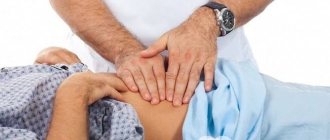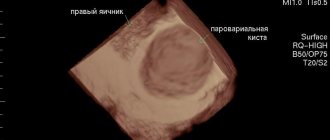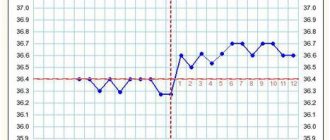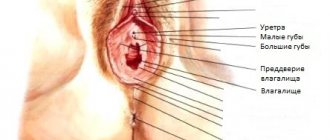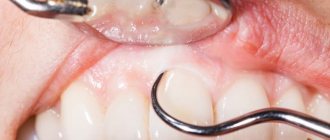District gynecologist, Gynecologist-surgeon (SOD)
Fedina
Tatyana Leonidovna
Obstetrician-gynecologist of the highest category
Make an appointment
Obstruction of the fallopian tubes can be caused by various reasons. One of them is the accumulation of liquid in the lumen of the pipe. In medical language, this pathological condition is called hydrosalpinx, a type of sactosalpinx, when multiple adhesions impede patency and contribute to the accumulation of exudate in the cavity. The accumulation of fluid in a closed space can cause suppuration and a sharp deterioration in the patient’s condition, posing a serious threat to her reproductive function.
Etiology of the disease
Hydrosalpinx of the tubes can develop in one or both tubes. It is possible that liquid accumulates in one chamber or the cavity is fragmented into several cells separated by partitions. An intense increase in the volume of exudate leads to swelling of the tube and the onset of the inflammatory process. The walls of the pipe become thinner, and pronounced swelling occurs. A stable inflammatory process, which is not treated with timely and competent treatment, can cause infertility or miscarriage, preventing the implantation of the embryo to the uterine wall or its full development. It is possible to influence the pathology conservatively or surgically. In the most difficult cases, the patient is indicated for tubectomy.
Classification of disease types
Depending on the distribution and nature of the disease, the following types of hydrosalpinx are distinguished:
- right- or left-sided, affecting the right or left pipe, respectively;
- bilateral, threatening a woman with complete infertility due to obstruction of the fallopian tubes;
- simple, in which only the pipe cavity is involved in the pathological process;
- follicular, in which multiple cavities are formed as adhesions grow;
- venticular, in which the contents of the fallopian tube burst into the uterine cavity and out.
Possible complications
Complications of hydrosalpinx can include:
- ectopic (tubal pregnancy);
- miscarriage;
- suppuration of hydrosalpinx (pyosalpinx);
- adhesions in the pelvic cavity;
- infertility;
- in the case of IVF – ineffectiveness of the procedure, spontaneous termination of the resulting pregnancy;
- rupture of the fallopian tube.
Causes of hydrosalpinx development
The main cause of unilateral or bilateral hydrosalpinx during pregnancy or menopause, according to most medical specialists, is the consequences of prolonged inflammatory processes and numerous adhesions. The enlarged walls of the uterus prevent the full outflow of secretions produced by the mucous membrane. Also, an increase in the volume of fluid becomes possible due to its “leakage” from the cells of neighboring tissues. The adhesions formed during inflammation are located inside the oviduct or in the abdominal cavity. Their formation occurs gradually, and until the lumen is completely overgrown, the accumulated liquid may partially flow out of the cavity.
In addition to inflammatory processes, hydrosalpinx on the left or right can cause appendicitis, peritonitis, complications after surgery, endometriosis, diseases of the female genital area and STDs. There is also a possibility of developing pathology due to abortions and curettage. The inflammatory process is usually localized in the ovaries, uterine cavity or appendages. In some cases, the outflow of fluid is prevented by a benign or malignant neoplasm. The likelihood of such a development of events forces differential diagnosis to exclude oncological disease.
Structure and physiological functions of the fallopian tube
It is also called the oviduct. It is a hollow, with a lumen width of up to 1 mm, paired anatomical formation about 10-12 cm long, connecting the fundus of the uterus with the pelvic cavity. With one hole, the fallopian tube opens into the uterine cavity. Its distal end ends on the ovary and contains a second opening, bordered by fimbriae.
The walls of the fallopian tube consist of three membranes - serous, muscular and mucous. The serous membrane covers the outside of the oviduct, the muscular membrane consists of two differently directed layers of smooth muscle fibers, which provide the oviduct with peristalsis (contractions) in the direction from the ovaries to the uterus. The mucous membrane forms longitudinal folds and is a layer of cells of cylindrical ciliated epithelium with villi. Between the epithelial cells are glandular cells that secrete mucus into the lumen of the tube. This mucus ensures the constancy of the internal environment of the tube, helps maintain the activity of sperm, the viability of the egg and the embryo in the early stages of its formation.
During the period of ovulation, the egg is captured by the fimbriae and then, as a result of peristalsis and vibrations of the villi of the ciliated epithelium, moves into the uterine cavity. Mucus secreted by glandular cells also freely enters the uterine cavity.
So, the physiological functions of the fallopian tubes are:
- Capture of an egg through fimbriae at the moment of its release from the follicle into the abdominal cavity (ovulation).
- Ensuring the movement of the egg and delivery of sperm from the horn (corner) of the uterus to the egg.
- Ensuring the vital activity of germ cells, preparing them for fusion and creating conditions for fertilization.
- Movement of the embryo into the uterus through peristalsis and increased activity of the epithelial cilia.
- Ensuring the development of the embryo until the implantation of the fertilized egg in the uterus.
Symptoms of hydrosalpinx
The list of main signs of hydrosalpinx includes:
- a feeling of heaviness, nagging pain in the area of the inflammatory process during physical activity;
- copious discharge with clear or cloudy contents.
If the tube ruptures and the contents leak into the abdominal cavity, a patient with hydrosalpinx experiences sharp pain, cold sweat and increased heart rate. A possible complication is peritonitis, when bleeding occurs into the abdominal cavity followed by suppuration. The leakage of fluid from the fallopian tube does not mean the elimination of the problem: new adhesions form at the site of the rupture, and a relapse of the disease occurs.
When to see a doctor
Discomfort, nagging pain and questionable discharge that appears outside the menstrual period should be an immediate reason for a woman to consult a specialist.
Are you experiencing symptoms of hydrosalpinx?
Only a doctor can accurately diagnose the disease. Don't delay your consultation - call
Hydrosalpinx and IVF at the Family Planning Center
Carrying out IVF with hydrosalpinx may be accompanied by certain difficulties. The fluid that accumulates in the fallopian tube affected by hydrosalpinx contains microorganisms, dead cells of the mucous membrane and other elements that are toxic to the embryo. Its development can be inhibited when fluid leaks from the cavity of the fallopian tube. The normal functioning of the endometrium may also be disrupted, which negatively affects embryo implantation. With severe hydrosalpinx, the ovarian response to stimulation in preparation for IVF is usually more poor.
To increase the chances of pregnancy during IVF with hydrosalpinx, doctors recommend removing the fallopian tubes affected by hydrosalpinx. It is the removal of organs in women with hydrosalpinx that improves the prognosis, while therapy aimed at restoring their patency has a much lesser effect.
At the family planning center of Professor Tsekh, experienced specialists perform successful in vitro fertilization for patients diagnosed with hydrosalpinx after preliminary treatment of hydrosalpinx. At the same time, removal of the fallopian tubes in patients with whitening hydrosalpinx does not negatively affect the blood supply and nervous regulation of the ovaries. Preservation of the ovaries during surgical treatment of hydrosalpinx before the IVF procedure is recommended only for young women with an absolutely healthy husband.
The high percentage of births of healthy children conceived by IVF by women with hydrosalpinx speaks of the exceptional professionalism of specialists in the field of gynecology and reproductive medicine working in the clinic of Professor Tsekh. Modern technologies, along with the invaluable experience of doctors, make conception possible even with severe diagnoses, which include hydrosalpinx.
Diagnosis of hydrosalpinx
In the early stages, only high-precision instrumental research methods can diagnose the disease. Later, when the pathology becomes more pronounced, it is possible to see the inflammation of the tube during a routine gynecological examination. The form of the disease can be determined by:
- smear examination of discharge;
- Ultrasound diagnosis of hydrosalpinx using the vaginal or abdominal method;
- diagnostic laparoscopy;
- hysterosalpingography, which studies the condition and patency of the fallopian tubes, as well as clarifying the possible development of a neoplasm in the uterine area.
The advantages of the laparoscopic method are the combination of diagnosis and treatment of the disease. During examination, it is possible to dissect adhesions and apply a stoma for effective drainage of fluid. Conservative treatment can eliminate the consequences of pathology.
Kinds
It is customary to distinguish several types of hydrosalpinx based on the composition of the accumulated fluid, location, severity of clinical symptoms, form of formation, as well as its morphology.
According to the composition of the liquid:
- hydrosalpinx (sactosalpinx) serous or simple;
- pyosalpinx (accumulation of pus);
- hematosalpinx (blood in the tube).
By location:
- right-sided hydrosalpinx;
- left-sided hydrosalpinx (much more common);
- double-sided
According to the form of the disease:
- spicy;
- chronic.
By form of education:
- oval;
- tubular;
- bell-shaped;
- irregular shape.
According to morphological structure:
- plain (one plain capsule);
- follicular (multiple formations with septa);
- valve (slight release of the contents of the hydrosalpinx with mucus).
Treatment of hydrosalpinx
At the initial stage of treatment, a patient with hydrosalpinx is sent for surgery to remove inflammation, restore patency of the tubes and their normal functioning. The laparoscopic method is considered optimal for most patients. Its low morbidity is explained by the use of endoscopic equipment, which does not require deep incisions and eliminates tissue damage. A few hours after recovering from anesthesia, the patient can get up and move around with the help of loved ones. The effect of the treatment can be supplemented by:
- a conservative course, which involves taking antibiotics, anti-inflammatory drugs and drugs for resolving adhesions;
- methods of physiotherapy: electrophoresis, magnetic therapy, mud therapy, balneotherapy, electrical stimulation of pipes, etc.
Complete restoration of tube patency is considered impossible, since hydrosalpinx is recurrent. This increases the risk of ectopic pregnancy, which is dangerous for the mother and the fetus. If the patient does not plan to conceive and give birth to a child, a tubectomy is indicated so that the inflamed tissue does not become a source of infection for the entire body.
Are there any restrictions necessary for this disease?
Yes, definitely. Firstly, physical activity should be avoided (vibration, straining, sudden changes in body position: somersaults, bending, jumping). Secondly, avoid excessive activity during sexual intercourse, which increases pain. In addition, it is not recommended to sunbathe and visit a solarium, as well as visiting baths, saunas and taking hot baths, which can provoke an exacerbation of the inflammatory process.
It is undesirable to swim in the pool and open reservoirs, as local hypothermia will also provoke an exacerbation. It is prohibited to drink alcohol, including low-alcohol drinks, which suppresses the immune system.
How to enroll in JSC "Medicine" (clinic of academician Roitberg)
You can make an appointment with the specialists of JSC "Medicine" (clinic of Academician Roitberg) on the website - the interactive form allows you to select a doctor by specialization or search for an employee of any department by name and surname. Each doctor’s schedule contains information about visiting days and hours available for patient visits.
Clinic administrators are ready to accept requests for an appointment or call a doctor at home by calling +7 (495) 775-73-60.
Convenient location on the territory of the central administrative district of Moscow (CAO) - 2nd Tverskoy-Yamskaya lane, building 10 - allows you to quickly reach the clinic from the Mayakovskaya, Novoslobodskaya, Tverskaya, Chekhovskaya and Belorusskaya metro stations .
What factors cause salpingoophoritis?
Salpingo-oophoritis is possible in a woman if staphylococci, E. coli, streptococci, mycobacterium tuberculosis, gonococci and other pathogenic microorganisms penetrate into the fallopian tubes and then into the ovaries. Escherichia coli, as well as cocci, penetrate upward from the uterus, Mycobacterium tuberculosis enters from the lungs and other organs through the hematogenous route, through the bloodstream.
Salpingo-oophoritis can occur due to overwork, weakened immunity, or swimming in cool water. In each case of the disease, timely treatment is necessary.
Acute inflammation of the uterine appendages can be caused by a general infectious disease, as a result of weakened immunity. In this case, the pathogen enters the pelvis from an infected focus, which can be purulent tonsils or an inflamed maxillary sinus.
The infection can also be transmitted sexually, mainly due to a decrease in local immunity, after an abortion or other intrauterine interventions.
Often, acute salpingoophoritis or exacerbation of chronic salpingoophoritis is diagnosed if an abortion has been performed, since it represents a very strong stress for the female body. And exacerbation of existing chronic salpingoophoritis can be facilitated by hypothermia, stress, constant overwork, and lack of proper nutrition.
Modern methods of treating salpingoophoritis
Treatment of salpingoophoritis is carried out taking into account the causes of the development of the infectious process and the clinical course.
If salpingoophoritis is acute, then treatment is carried out exclusively in a hospital setting. The patient is prescribed mandatory bed rest, light food and plenty of fluids. In the treatment of acute salpingoophoritis, it is possible to use medicinal or surgical methods.
If drug therapy is used, anti-inflammatory, antibacterial and painkillers are prescribed. Desensitizing and immunostimulating therapy is performed.
When a patient is diagnosed with tubo-ovarian tumors, surgery is performed. In the postoperative period, detoxification and antibacterial therapy is prescribed.

